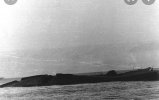This weekend is the 80th anniversary of Midway, so it's not at all surprising to see Jonathan Parshall drop in today for another lengthy pod/video cast with Drachinifel.
But this one looked worth special mention here, because this time, unprompted, Parshall offers up some alternate history - or as he likes to call it, "counterfactuals." And these are the questions he looks at:
1. What would have happened if Midway had been 3 vs 5 carriers (the IJN brings
Zuikaku)?
2. What would have happened if Midway had been 2 vs 5 carriers (the IJN brings
Zuikaku, but the USN cannot bring
Yorktown in time)?
And then, in turn, he also looks at a further variant of both, in which either a) the "good" Hornet shows up, or b) the "bad" Hornet shows up (i.e., whether Mitscher actually follows his orders in where he sends his strike groups out). First, though, he does model the existing battle (4 vs 3) with both Hornet variants, just to see what happens.
This gets modestly rigorous: Parshall employs a stochastic salvo combat model developed in cooperation with two Spanish scholars, Aneli Bongers and Jose L. Torres, in a 2017 article, "
Revisiting the Battle of Midway: A counterfactual analysis."
So, here are the quick and dirty answers:
0(a): [OTL: 4 IJN vs 3 USN, good Hornet]: US wins a curbstomb, 4 IJN losses vs 0 US losses. In short, Parshall, concludes, "Mitscher sunk the Yorktown."
0(b): [OTL: 4 IJN vs 3 USN, bad Hornet]: US wins as in OTL, 4 IJN losses vs 1 US losses. The model bears out history!
1(a): [5 IJN vs. 3 USN, good Hornet]: 5 IJN losses vs. 1-2 USN losses
1(b): [5 IJN vs. 3 USN, bad Hornet]: 3-4 IJN losses vs 2 USN losses
2(a): [5 IJN vs. 2 USN, good Hornet]: 2-3 IJN losses vs. 2 USN losses
2(b): [5 IJN vs. 2 USN, bad Hornet]: 2 IJN losses vs 2 USN losses
This is interesting, because the results pretty resoundingly reject the the proposition, mooted over the years, that Yamamoto bringing
Zuikaku along could have been a game changer. In fact, the Japanese still get smashed. The real difference maker, as it turns out, is
Yorktown. As Parshall, Bongers, and Torres' analysis seems to consistently show, if the Americans bring all three carriers as they did OTL, the Japanese are going to get their asses kicked at Midway even if they bring all 5 intact KB fleet carriers. Even with Nimitz's crappy sub captains and Midway's crappy attack squadrons, American advantages are just too much for the Japanese to have much chance of overcoming.
The video is 3 hours long, but Parshall's actual discussion is only 7 minutes, starting at my timestamp:
Discuss amongst yourselves whether you find this analysis persuasive (though you really have to dig into the paper to see the math and the modeling).
